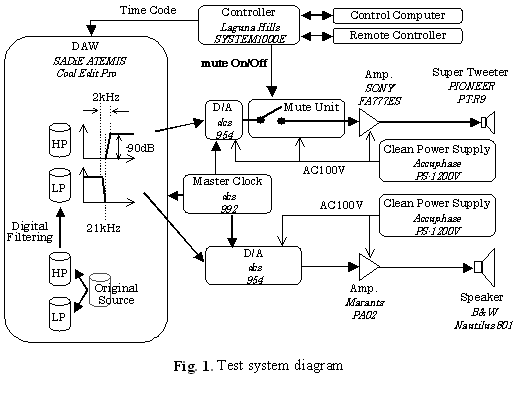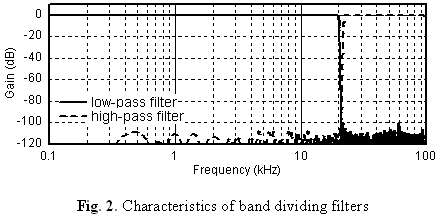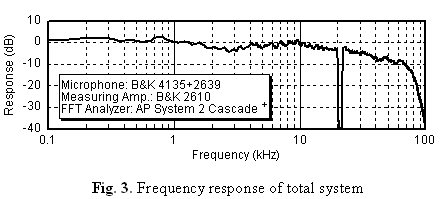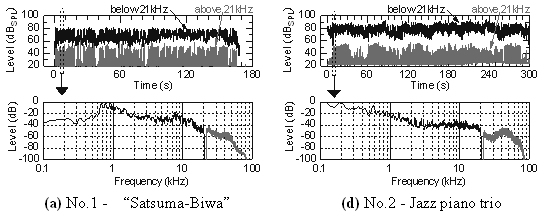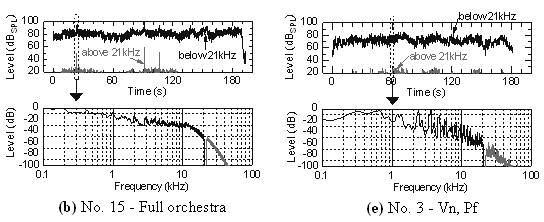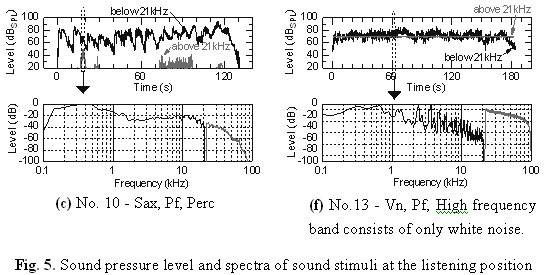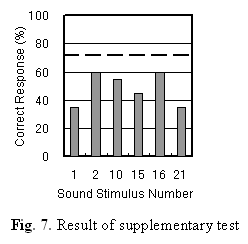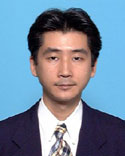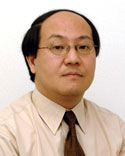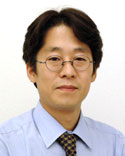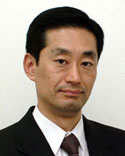This evaluation test was designed to estimate any possibility
of perceptual discrimination between musical sounds with and without very high
frequency components and to confirm any influences of the characteristics of
very high frequency components of each sound stimulus on the results of the
tests.
3.1. Sound StimulusTwenty kinds of
sound stimuli with various combinations of different musical instruments were
prepared as shown in
Table 1. For such evaluation tests, it
is very important to maintain the highest possible quality of sound stimuli,
therefore, all the sound stimuli except No. 11, 12, and 13 were originally
recorded by the authors using a high quality recording system with a sampling
rate of 192 kHz, 24-bit resolution, and high-quality microphones which can
capture sounds up to very high frequency.
Number 13 was an
artificially-produced stimulus whose auditory band component was exactly the
same as that of No. 3, and the very high frequency components were replaced by
white noise at a constant level.
Numbers 11 and 12 were selected from SACD
sound materials.
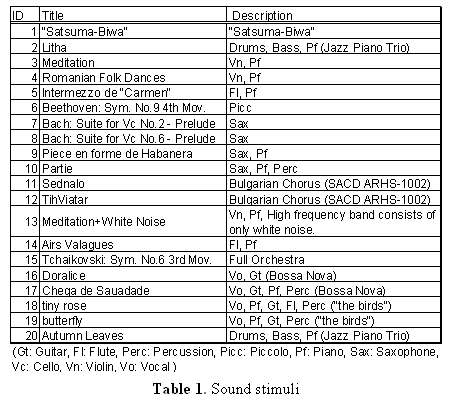 3.2. Subjects
3.2. SubjectsThe subjects were 30
males and 6 females including 33 experts in audio engineering, 2 students, and
the musician who had recorded the sound stimuli. They consisted of 3
teenagers, 12 in their twenties, 16 in their thirties, 3 in their forties and
2 in their fifties.
3.3.
ResultsThe tests were conducted on 36 subjects who evaluated each
sound stimulus once or twice. Thus, each stimulus was evaluated 40 times in
total. Figure 4 shows the rate of correct response for each sound stimulus in
the 40 trials. Since the prior probability of correct responses was considered
to be 50%, the significance probability of this evaluation test with the 40
trials was set at 66% (shown by the dashed line in
Fig. 4) at
a significance level of 5%. This figure shows that the three sound stimuli No.
1, 15 and 10 are close to the significance probability at a significance level
of 5%.
Figure 5-(a), (b) & (c) show the sound pressure
level and the spectrum of each sound stimulus at the listening position and
the standard reproduction level, which was estimated from the sound source
spectrum, and the magnitude-frequency characteristics of the test system as
shown in Fig. 3.
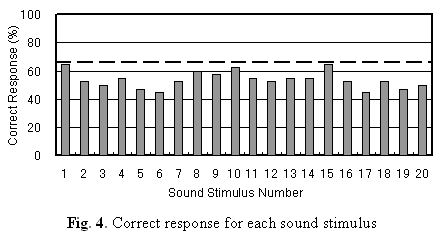
The correct responses of No. 2, 3 and 13 are close to
the chance level. Figure 5-(d), (e) & (f) show a similar analysis for No.
2, 3 and 13. Number 13 was the stimulus artificially produced by replacing the
very high frequency components of No. 3 with white noise at a constant level.
Although the overall level of the very high frequency components of No. 2 and
13 is greater than that of the other sound stimuli, it has no significant
difference on hearing between the cases with and without very high frequency
components.
Figure 6
shows the correct response rate of each subject. Since the prior probability
of correct responses with 20 trials of different stimuli by each subject was
50%, the significance probability of this evaluation test was set at 72%
(shown by the dashed line in Fig. 6) at a significance level of 5%. From this
result, it is clear that one subject (a 17-year-old female) attained a 75%
correct response rate which was a significant difference at the 5%
level.

